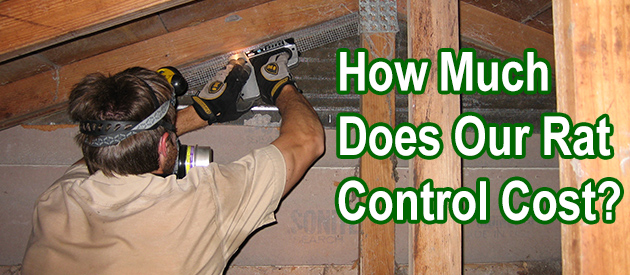Norfolk County, Norfolk Rat Control Situation:
Will removing the food source remove the mice? I found a black mouse today...man, those things are fast. And every animal I've ever seen is stupid; this one tried to run by and ran face-first into a box, immediately letting out a startled squeak as it crashed. Idiot. They all go full-potato around me. Anyway, turns out I had a 20lb bag of bird seed which is now a 2lb bag of bird seed. I've now put that and the grass seed outside. As there's a mouse here now, I'm going to re-check my food storage to ensure it's all inaccessible. Will removing the food remove the mice? Nothing to eat here. If they can't find food, will they go away?
Dear David, I have to say that I have found your site very informative. We have had mice this past very cold winter and caught 3-4 of them with snap traps. The last one was probably March or April. This week I noticed a sewer smell in the stairwell of the basement; I caught all the mice in the basement. I am having a hard time determining which wall right or left it is coming from. It is about 5 steps down the 12 steps. That area would probably be height of the first floor. Do you suggest I try cutting a hole in the wall. My husband suggested using a drill hole to determine which wall, easier to patch. I am not sure if I should call someone or just start to cut the wall myself. Any advice would be welcome. Thank you!
Hi I have them now because I am remodeling I am in the process of sealing all open areas but I still feel they will be under my trailer, can you give tips in helping controlling them I am willing to do what it takes to get rid of them. Please advise what is a nuisance controller and how do I find one for a reasonable price.
The rats are in the floor (First floor ceiling) and 2nd story joist space and in the attic that has no access and are waking me up. I'm afraid they are going to short a wire a burn the house down. What about electric traps . And if they're OK where do you put them. Thanks Doug in Tacoma WA PS I'm building then out and placing snap traps too. Peanut butter on cotton balls. I feed the birds and the neighbors have chickens and don't pick up their rotting fruit. So eliminating food would be impossible. I would quit feeding the birds if thought it would help.
Norfolk Rat Control Tip of The Week
Can Rats Kill Mice?
Before providing an answer to this question, first of all, you need to be able to differentiate between a rat and mouse. As you must already know, they are both rodents and are quite identical. Without precisely knowing the differences between these two rodents, it will be quite difficult to know how they relate with each other and if rats do kill mice or it's just another myth.
To help you understand this in the best possible way, we will be taking a look at some of the qualities possessed by both rodents. After which we will address the main topic which is whether rats are capable of killing mice or not.
Rats
Rats are medium sized rodents with sizes bigger than that of mice. They have long tails and are very active compared to mice. The most common household rat is the black rat and this particular specie of rat is bigger than mice and also very active.
Mice
On the other hand, mice are smaller rodents with a pointed snout and small round eyes. These rodents have uniform traits; hence they often tend to look very identical. They are very docile when compared to their rat counterparts.
Having shared all these, by now you should categorically be able to differentiate between rats and mice. Coming back to the question above, the fact is rats are capable of killing mice. This habit is only exhibited when rats are faced with starvation and the only option left is to kill and feed on them.
Also, a change in environmental conditions can trigger their hunting senses and make them kill mice. Apart from any of these conditions, rats killing mice doesn't usually occur. You might have rats and mice in your home at the same time causing a nuisance.


